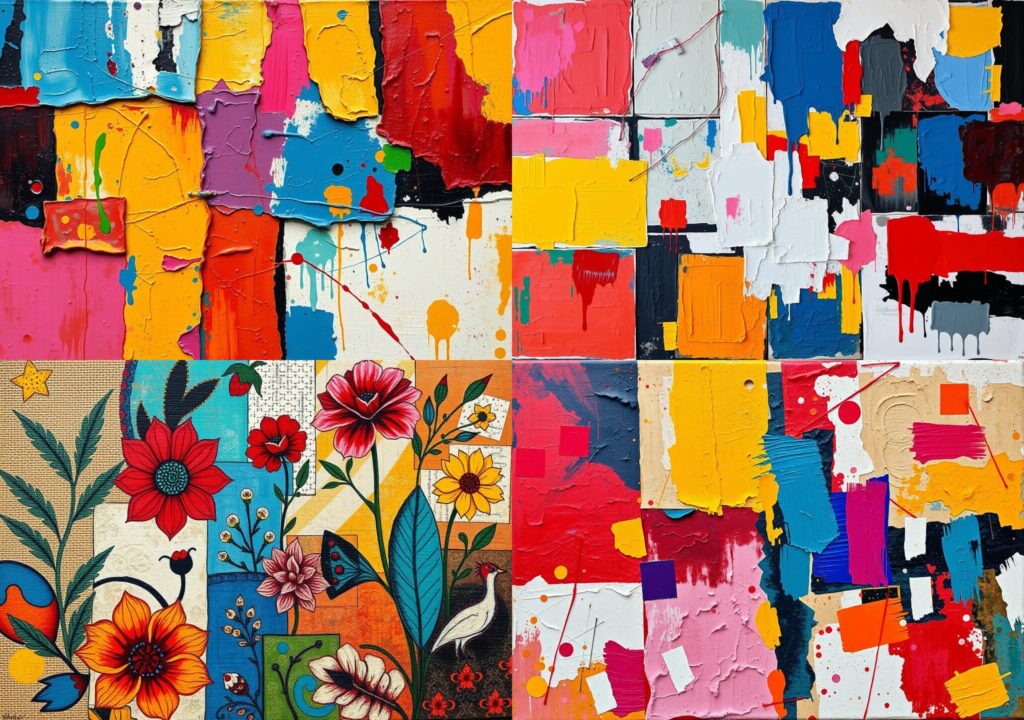Choosing the best canvas for artists is like finding the perfect dance floor for your masterpiece. It’s not just a surface; it’s the foundation that holds your creative vision, influencing how your colors blend, how your textures build, and how your artwork will look for years to come. Think of it this way: a chef needs the right pan for their dish, and an artist needs the right canvas for their art. Picking the perfect painting surface isn’t just a detail; it’s a huge part of making your art shine and last. Whether you’re a seasoned pro or just starting your artistic adventure, understanding the different types of canvases available will empower you to make choices that truly elevate your work.
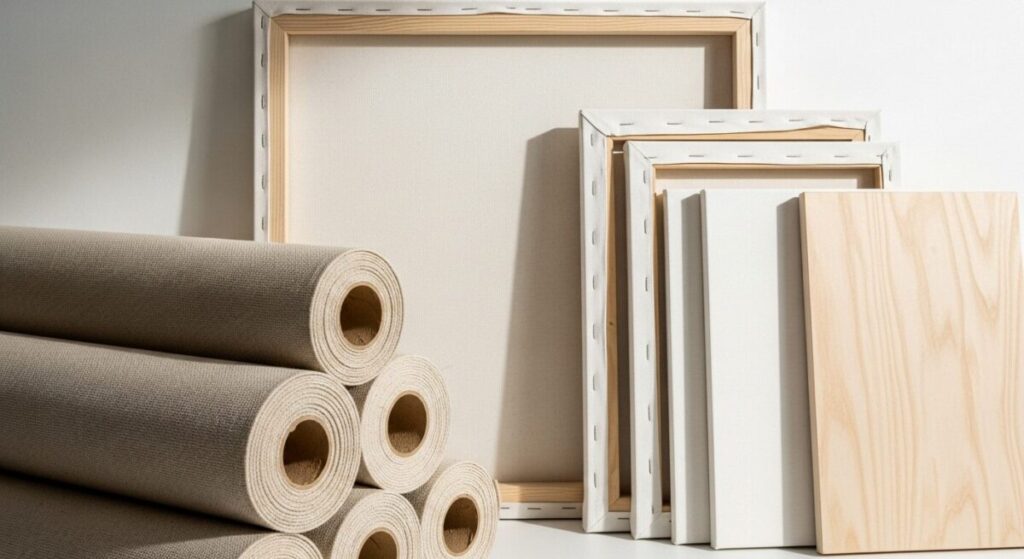
Key Point Summary
- Canvas is the Foundation: The right canvas is crucial for how paint behaves and how art endures.
- Variety is Key: There are many types of canvases, each with unique properties for different paints and styles.
- Cotton vs. Linen: Cotton is affordable and popular; linen is durable and professional.
- Priming Matters: Gesso prepares the surface, protecting the canvas and making paint stick better.
- Think About Texture: Canvas texture affects how paint goes on and how the final piece looks.
- Size and Shape: Choose dimensions that fit your artistic vision and display plans.
- Surface Stability: Consider how the canvas will hold up over time to keep your art looking great.
Why Your Canvas Choice Really Matters
You might think, “A canvas is a canvas, right?” Not quite! The type of canvas you pick can totally change how your paint feels when it goes on, how bright your colors look, and even how long your artwork will stay looking awesome. Imagine trying to paint a super smooth, detailed portrait on a really bumpy surface – it just wouldn’t work as well! Or, if you use a cheap canvas with oil paint, the paint might soak through and damage it over time. Choosing the best canvas for artists means thinking about the kind of art you want to make, the paints you’re using, and how important it is for your art to last.
Diving Deep: Types of Canvas and Their Superpowers
Let’s break down the main types of canvases you’ll find and what makes them special. Each has its own strengths, just like different art styles have their own unique vibes. You can learn more about how different art movements developed by checking out our guide on The Evolution of Art Movements.
1. Cotton Canvas: The Everyday Hero
Cotton canvas is super popular, especially for beginners and students, because it’s usually more affordable and readily available. It’s made from cotton fibers woven together, and you’ll often see it labeled by its “duck” weight or “ounce” weight, which tells you how dense and strong the fabric is. Higher numbers mean a tougher, heavier canvas.
- Pros: Generally inexpensive, easy to stretch, takes gesso well, good for practice and studies.
- Cons: Can be less durable than linen over a very long time, might sag slightly, and the fibers can absorb more oil from paints if not properly primed.
- Best For: Acrylic paints, less demanding oil painting projects, student work, sketching, and studies.
2. Linen Canvas: The Professional’s Pick
Linen canvas is often considered the top choice for professional artists. It’s made from flax fibers, which are stronger and more durable than cotton. Linen threads are also more consistent, meaning fewer “slubs” or bumps in the weave, giving you a smoother, more even surface.
- Pros: Incredibly durable and long-lasting, less likely to sag or warp, smoother surface (especially fine weaves), less absorbent, and considered archival quality.
- Cons: Significantly more expensive than cotton, can be a bit tougher to stretch.
- Best For: Serious oil paintings, detailed portraiture, art that needs to last for generations, and professional-level work.
3. Canvas Boards and Panels: The Sturdy Sidekicks
These aren’t exactly “canvases” in the traditional stretched sense, but they’re super common painting surfaces. Canvas boards are usually made by gluing a thin piece of canvas onto a rigid backing board, like cardboard or MDF. Panels are similar but might use wood, aluminum, or other materials as the base.
- Pros: Very stable and rigid (no sagging!), easy to store, great for travel, often very affordable.
- Cons: Can warp if exposed to moisture (especially cardboard-backed), might not have the “give” that some artists like from stretched canvas.
- Best For: Outdoor painting (plein air), quick studies, smaller works, abstract painting where rigidity is desired, and for beginners due to their low cost. Explore more abstract painting ideas in our article on 25 Innovative Abstract Painting Ideas.
4. Wood Panels: The Smooth Operator
Wood panels offer a completely different feel from canvas. They are very smooth and rigid, which can be fantastic for detailed work or for artists who prefer a non-absorbent surface. They need to be properly sealed and primed, just like canvas.
- Pros: Extremely durable and stable, perfect for fine detail, no stretching required, won’t sag.
- Cons: Can be heavy, can be more expensive, needs proper preparation to prevent warping and acidity from affecting the paint.
- Best For: Highly detailed works, encaustic painting, tempera, mixed media, or artists who dislike the texture of woven canvas.
The Magic of Priming: Why Gesso is Your Best Friend
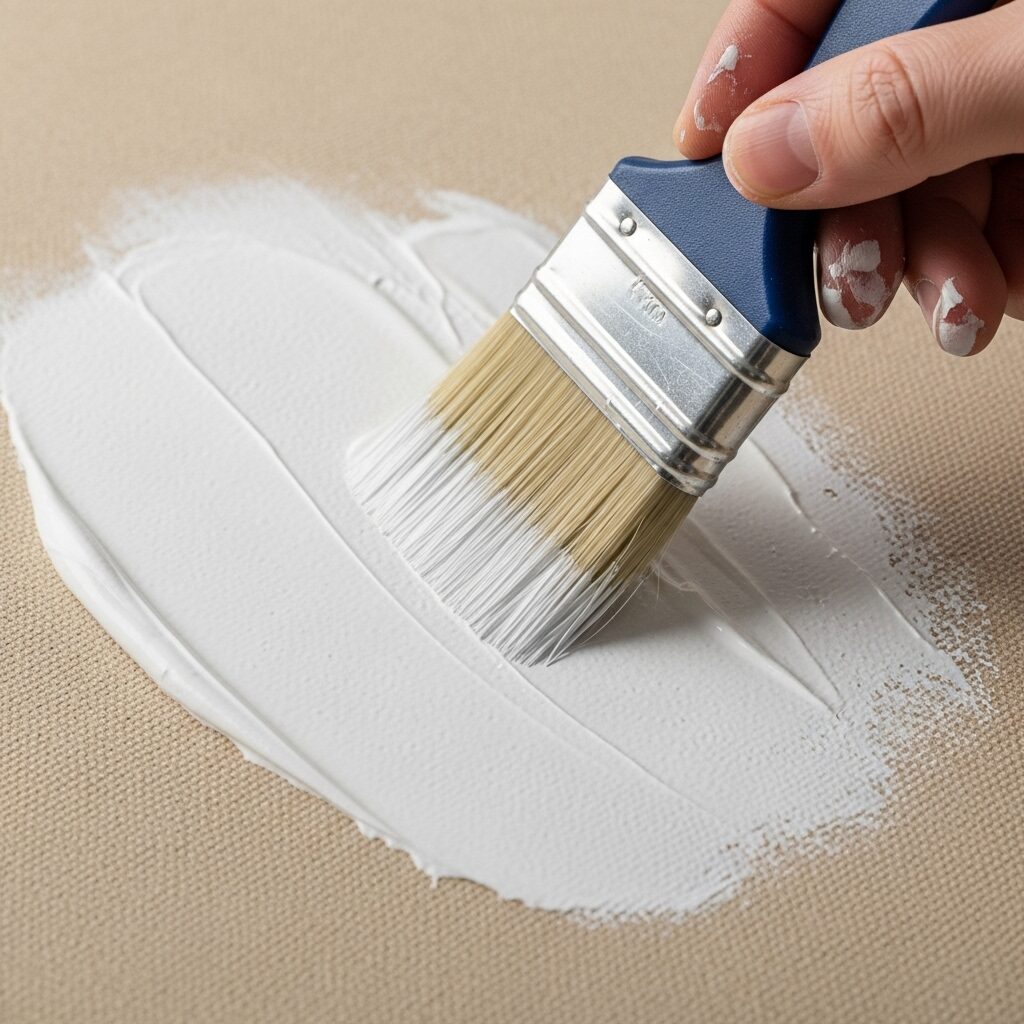
No matter which type of canvas you choose, most canvases you buy (especially pre-stretched ones) will come “primed.” This means they’ve been coated with a special substance, most commonly gesso. Gesso (pronounced “jess-oh”) is a mix of a binder (like acrylic polymer) and a pigment (usually white). It does a few really important jobs:
- Protects the Canvas: For oil paints, gesso prevents the oil from soaking into the canvas fibers and eventually rotting them. For all paints, it provides a barrier against acids in the canvas that could harm your paint.
- Creates a Better Surface: Gesso makes the surface less absorbent, so your paint sits on top and its colors stay vibrant. It also gives the canvas a slight “tooth” or texture, which helps the paint stick better.
- Brightens Your Colors: White gesso provides a bright, neutral base that makes your colors pop.
While many canvases come pre-primed, some artists prefer to add extra layers of gesso or even tint their gesso with color to create a unique starting point for their artwork. You can learn more about preparing your painting surface in our guide on Best Practices for Canvas Preparation: Maximize Your Art’s Potential.
Texture Talk: Smooth, Medium, or Rough?
The texture of your canvas, also known as its “tooth,” refers to how bumpy or smooth the surface is. This is mainly determined by the weave of the fabric (for cotton and linen) or the preparation of the panel.
- Fine Grain/Smooth: Great for detailed work, portraits, or when you want your brushstrokes to be the star. It doesn’t show the canvas texture much.
- Medium Grain: A good all-around choice that works for most styles and subjects. It has enough texture to hold paint but isn’t overly dominant.
- Coarse Grain/Rough: Adds a lot of texture to your painting, making your brushstrokes look bolder. Ideal for expressive works, landscapes, or when you want the canvas texture to be part of the artwork.
Consider the interplay between texture and light, just as light and shadow are essential in mastering visual depth in art, as discussed in our article on The Complete Guide to Light and Shadow: Master Visual Depth in Your Art.
Choosing the Right Size and Shape
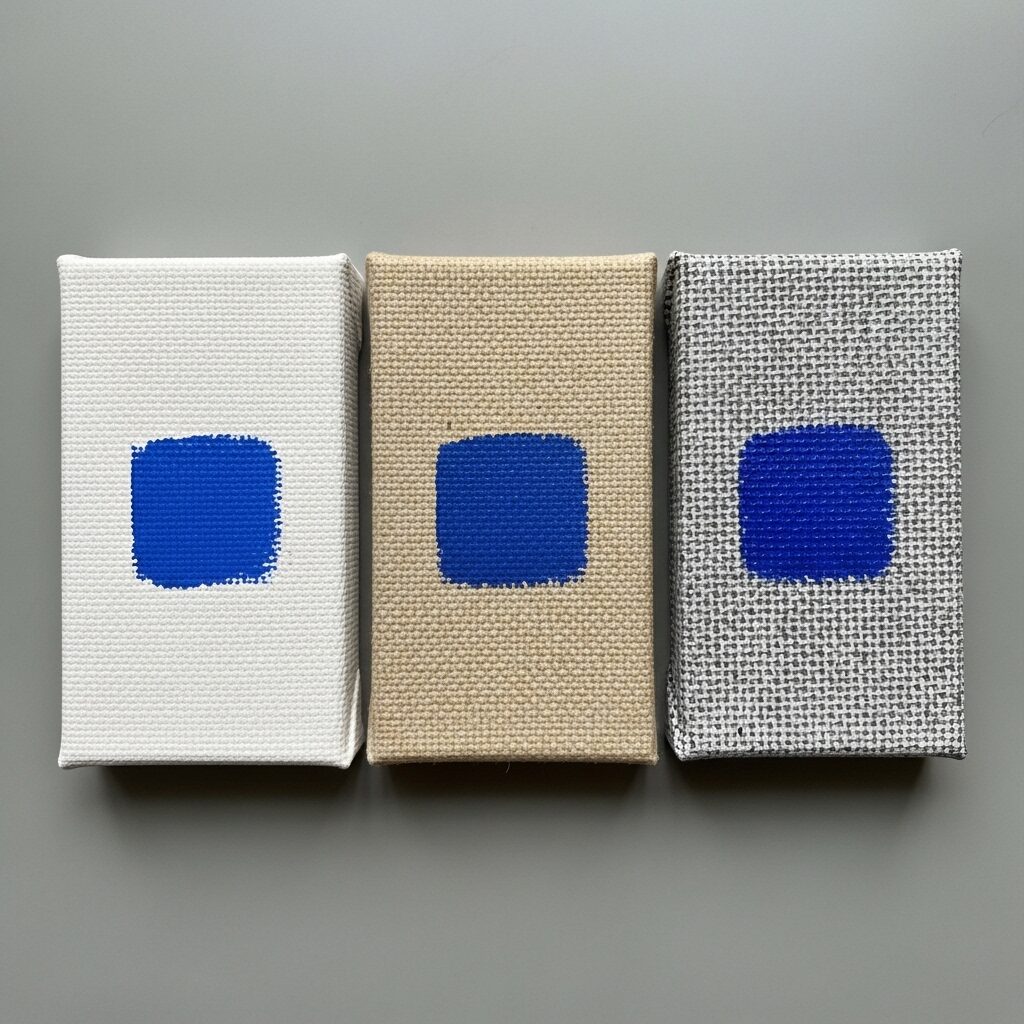
This might seem obvious, but the size and shape of your canvas play a huge role in your artwork. Are you planning a grand landscape or a delicate miniature? Do you envision a classic rectangle, a bold square, or a unique round shape?
Think about where the finished piece will hang. Will it be a standalone statement, or part of a series? The dimensions you choose should complement your subject matter and your artistic intentions.
Stretched Canvas vs. Rolls: What’s the Difference?
You’ll usually buy canvas either already stretched over wooden stretcher bars, or by the roll.
- Stretched Canvas: Convenient and ready to paint. The canvas is already pulled taut and stapled to a wooden frame.
- Canvas by the Roll: More economical if you paint a lot or need very specific sizes. You buy a roll of raw canvas and then stretch it yourself, or have a custom frame made. This gives you total control over the tension and the type of stretcher bars used.
Making Your Decision: A Quick Guide

Here’s a simple table to help you decide which canvas might be the best canvas for artists based on different needs:
| Canvas Type | Best For… | Key Features | Cost (Relative) |
| Cotton Canvas | Beginners, studies, general acrylic/oil, large works on a budget | Affordable, widely available, variety of textures | $ |
| Linen Canvas | Professional oil painting, detailed work, archival quality | Durable, stable, smoother weaves, long-lasting, less absorbent | $$$ |
| Canvas Boards/Panels | Travel, quick studies, small works, rigid surfaces, mixed media | Rigid, portable, no sagging, very affordable | $ |
| Wood Panels | Fine detail, encaustic, tempera, mixed media, stable support | Extremely rigid, smooth, won’t sag or warp (if prepped correctly), archival | $$ |
“Art washes away from the soul the dust of everyday life.”
Pablo Picasso.
This quote reminds us that the physical act of creating art, from choosing the surface to applying the final brushstroke, is a deeply personal and enriching experience. Just as Picasso revolutionized art with Cubism, as explored in our guide on What is Cubism: A Beginners Guide, your choice of canvas is part of your unique artistic journey.
Caring for Your Canvas
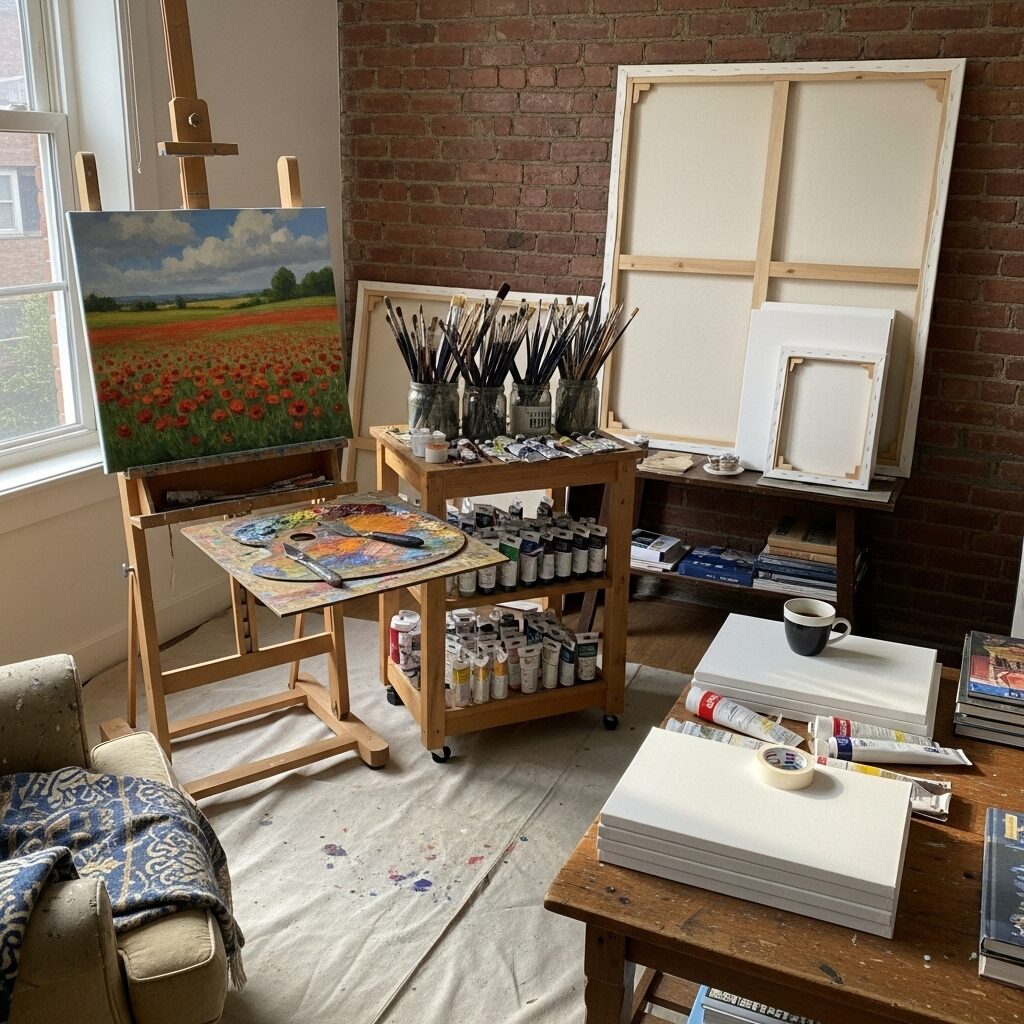
Once you’ve chosen the perfect canvas and created your masterpiece, proper care is essential to ensure it lasts. Keep your artwork away from direct sunlight, extreme temperature changes, and high humidity. If dust accumulates, gently clean it with a soft, dry brush. For more serious cleaning or restoration, it’s always best to consult a professional art restorer. The longevity of your art depends not only on the materials you use but also on how you care for it. For a comparison of different painting mediums, check out our article on Oil vs. Acrylic vs. Watercolor: The Ultimate Painting Mediums Comparison.
Your Artistic Journey Starts with the Right Foundation
Choosing the best canvas for artists might seem like a small detail, but it’s a fundamental step that sets the stage for your creative journey. By understanding the different materials, their properties, and how they interact with various paints, you’re not just picking a surface; you’re making an informed decision that will support your artistic vision and ensure your artwork stands the test of time. So go ahead, explore the options, experiment with different surfaces, and find the canvas that truly helps your art sing!
FAQs: Best Canvas for Artists
Q: What is the best canvas for acrylic paint? A: Cotton canvas is a fantastic choice for acrylic paint due to its affordability and versatility. Canvas boards are also great for beginners or smaller acrylic projects.
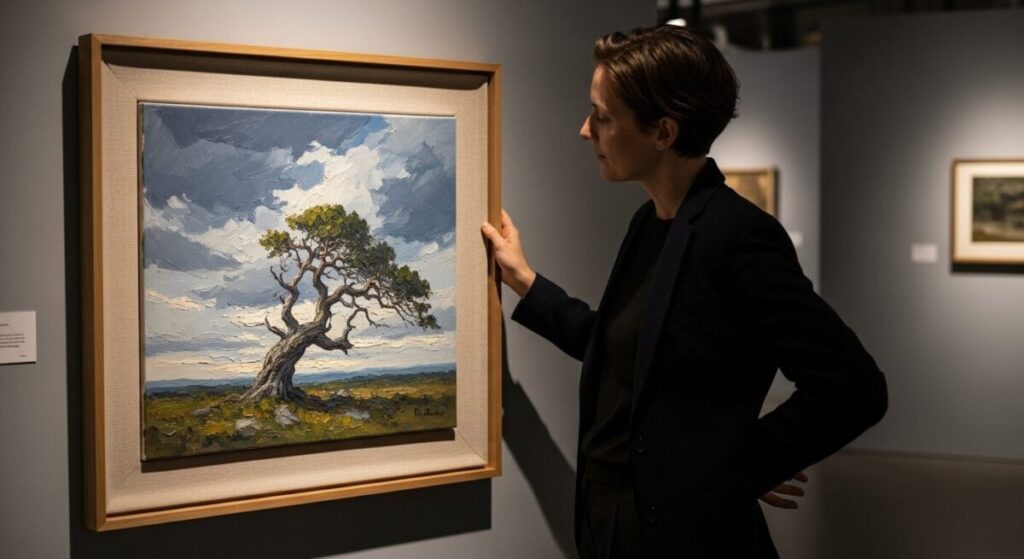
Q: Can I use oil paint on any canvas? A: While you can technically use oil paint on most canvases, it’s crucial that the canvas is properly primed with gesso. Without gesso, the oil from the paint can eventually damage the canvas fibers. Linen canvas is generally preferred for professional oil painting due to its durability.
Q: What does “primed” canvas mean? A: “Primed” means the canvas has been coated with a substance, usually gesso, to prepare the surface for painting. This coating protects the canvas, makes it less absorbent, and provides a good texture for paint to adhere to.
Q: Is linen canvas really worth the extra cost? A: For professional artists or those creating works intended to last for many generations, many believe linen canvas is worth the extra cost. Its strength, stability, and finer weave contribute to a more durable and often smoother painting surface.
Q: How do I know what canvas texture to choose? A: The best canvas texture depends on your artistic style. If you do detailed work, a fine-grain canvas is good. For expressive painting or landscapes, a medium or coarse grain can add character. If you’re unsure, a medium-grain canvas is a safe bet to start with.
Q: Can I paint on unprimed canvas? A: It’s generally not recommended to paint on unprimed canvas, especially with oil paints, as the paint can degrade the fibers over time. For acrylics, while less damaging, priming still provides a better painting surface and protects the canvas from environmental factors.
Q: What’s the difference between stretched canvas and canvas panels? A: Stretched canvas is fabric pulled taut over a wooden frame, giving it some “give.” Canvas panels are canvas glued onto a rigid board, offering a firm, unyielding surface. Panels are often more portable and less expensive.


